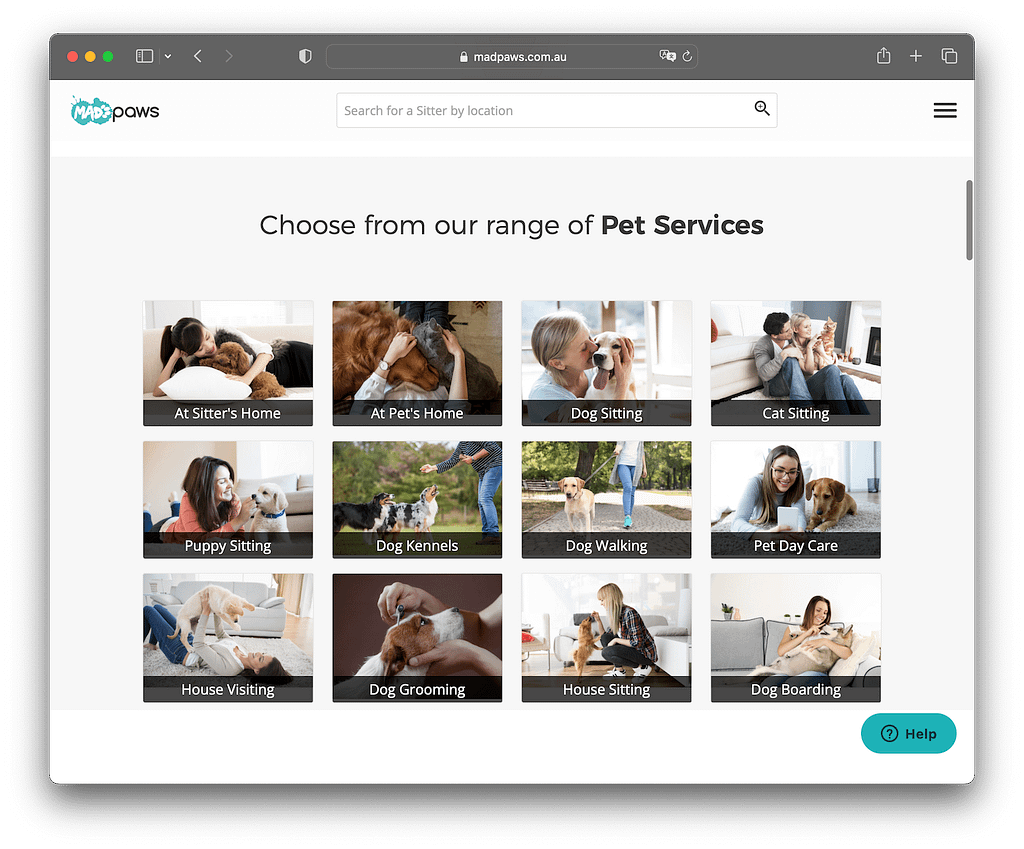10 Things to Know Before Building a C2C Marketplace

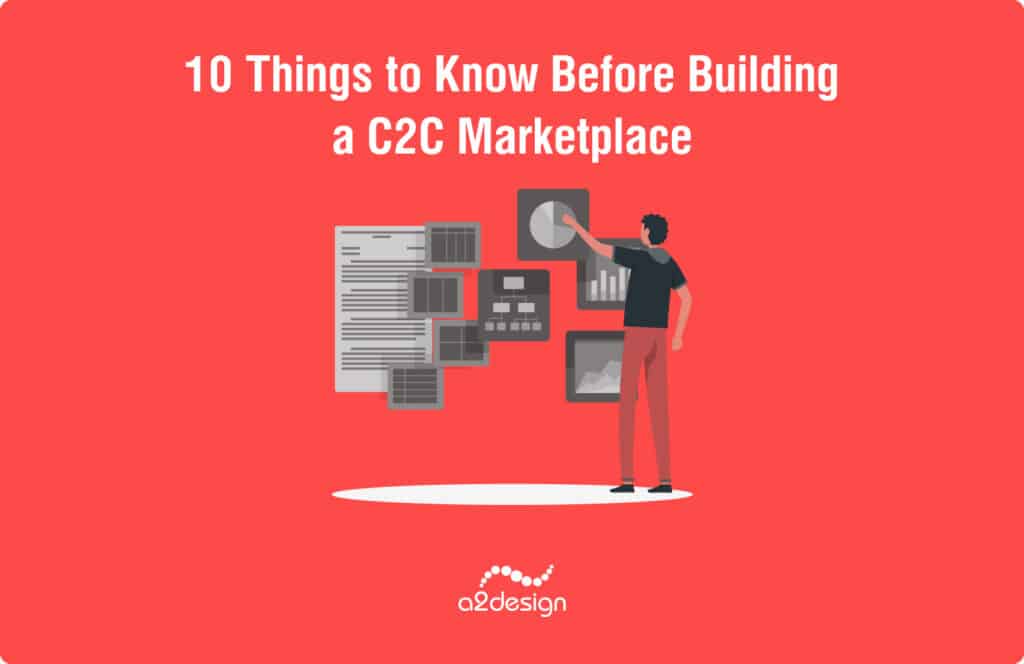
The e-commerce and online shopping landscape is ever-evolving, and the C2C (consumer-to-consumer) marketplaces like eBay, Etsy, and Facebook Marketplace have been the main driving force of this change in the past decade.
Today, buyers simply expect to be able to find a wide variety of goods on a single platform—at a competitive price—while sellers also expect convenience and flexibility in selling their goods, as offered by the popular platforms mentioned above.
The widespread popularity of C2C marketplaces also offers a lucrative opportunity for entrepreneurs, but opening a successful one isn’t without its hurdles. Careful planning, meticulous execution, and a thorough understanding of the mechanics of these C2C platforms are crucial for achieving success.
This is where this article comes in.
In this article, we’ll explore 10 of the essential factors to consider before launching your C2C marketplace business. They are:
- Defining your niche and target audience
- Validating your value proposition
- Establishing how you’ll attract buyers and sellers
- Deciding on how you will make money (monetization model)
- Building trust and credibility
- Technology choices: finding the right tools
- Design for user experience (UX)
- Marketing and community building
- Scaling and evolving your marketplace
- Legal considerations in building a C2C marketplace
Without further ado, let’s embark on this journey to build a thriving C2C marketplace right away.
In the sprawling world of e-commerce, the key to C2C marketplace success lies in choosing the right battleground. Think of it like this: would you rather be a small fish with a dedicated following in a targeted pond, or one of countless fish lost in the vast ocean of a general marketplace? A focused niche is your ticket to standing out and building a loyal community.
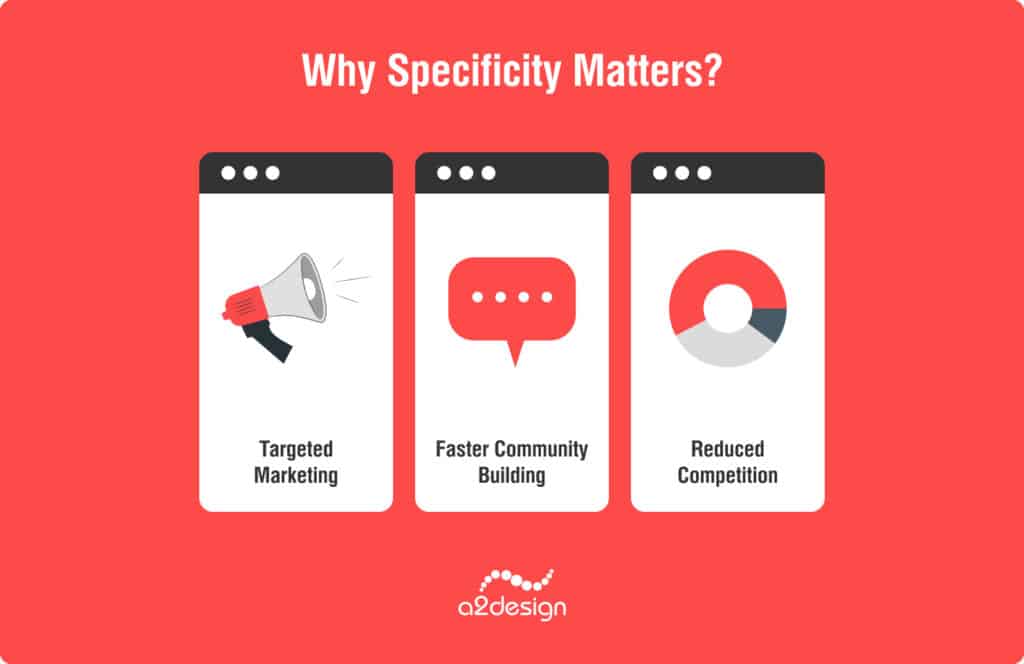
Why Specificity Matters:
- Targeted Marketing: Know exactly who you’re speaking to, allowing for laser-focused advertising and messaging that resonates.
- Faster Community Building: Users with shared interests are more likely to connect, discuss, and become dedicated platform advocates.
- Reduced Competition: Stand apart from giant, all-encompassing marketplaces with a unique offering.
Understanding Your Ideal User
Once you’ve narrowed your niche, it’s time to delve deeper. Who exactly are the buyers and sellers you envision using your platform? Consider:
Demographics: Age, location, income bracket, occupation
Psychographics: Interests, values, lifestyles
Pain Points: What problems do they face that your marketplace can solve? (Is it inconvenient to find specific items? Do they need a platform to sell their creations?)
Motivations: What drives them to buy or sell within your chosen niche?
Example Scenario: Handmade Children’s Clothing
Instead of competing with secondhand giants, focus on handmade, ethically-produced children’s clothing. Your target audience might be:
- Buyers: Eco-conscious parents, grandparents seeking unique gifts, and those tired of mass-market designs.
- Sellers: Talented craftspeople, stay-at-home parents with creative skills, small businesses specializing in children’s wear.
By understanding these profiles, your platform can tailor features, messaging, and even design choices to resonate deeply with this specific community.
2. Validating Your Value PropositionYou might have the perfect niche, but that alone won’t guarantee success. In the crowded C2C landscape, it’s crucial to ask yourself: Why should anyone choose my platform?
Identifying a unique value proposition is the key to making your C2C marketplace a must-use destination.
Beyond the Basics
What makes you more than just another “place to buy and sell”?
Consider angles like:
- Pricing: Will you offer lower fees compared to existing platforms, especially for early adopters?
- Curation: For some niches, a hand-picked selection can be a powerful draw (e.g., high-quality vintage clothing).
- Community: Are you focused on fostering interaction, content sharing, and a sense of belonging that goes beyond transactions?
- Ethics: Perhaps sustainability, fair-trade products, or supporting specific causes are central to your mission.
- Specialization: Can you offer features tailored to your niche that larger platforms lack?
Get Real-World Validation
Don’t make assumptions – get out there and talk to your potential users.
- Competitor Analysis: What do established players do well? Where do they fall short? Identify gaps your platform can fill.
- Surveys: Use online tools to target your ideal audience, asking about their buying/selling habits and frustrations.
- Interviews: A few in-depth conversations with people fitting your target profile can yield incredible insights.
Remember, your value proposition is your promise to users. Make it crystal clear, compelling, and backed by solid research to lay the groundwork for your marketplace’s success!
3. The Chicken-and-Egg Dilemma: Attracting Buyers and SellersBuilding a C2C marketplace can feel like a high-stakes balancing act. Buyers won’t flock to a platform with empty virtual shelves, and sellers won’t bother listing if they don’t see potential customers. So, how do you break this stalemate and get the momentum going? The answer lies in a two-pronged approach, offering compelling reasons for both sides of your marketplace equation to join the party.
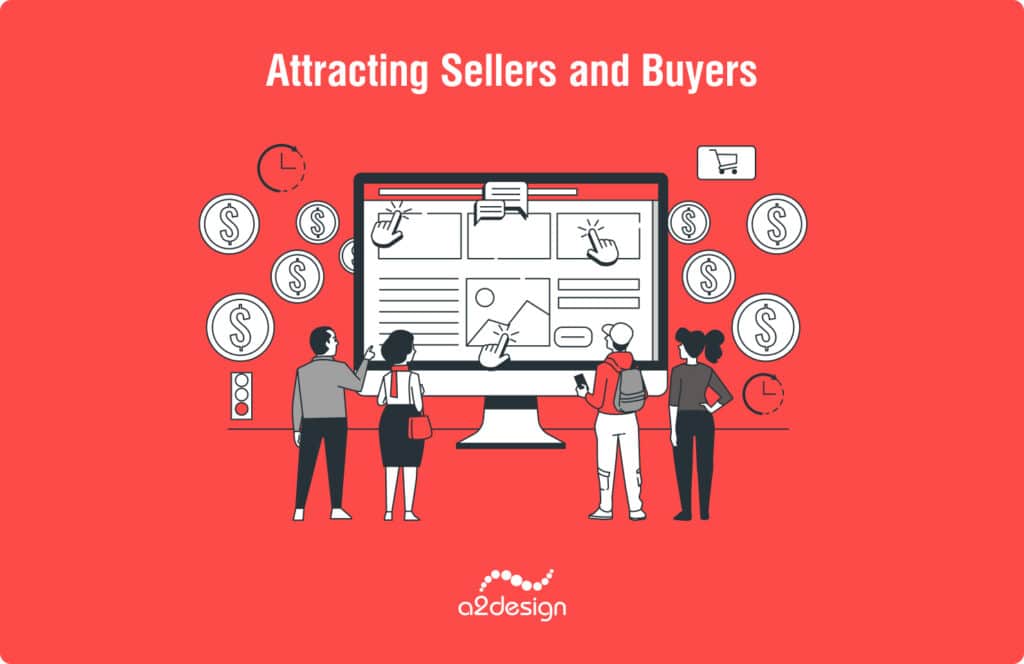
Incentivize the Early Birds
Your first users are your most valuable asset. Treat them accordingly with enticing perks:
- Freebies and Discounts: Waive listing fees for a limited time, offer buyer coupons, or run exclusive launch promotions.
- Premium Placement: Give early sellers visibility boosts, highlighting their listings to attract those initial buyers.
- Onboarding Help: Guided tutorials, templates, and even personalized support can ease the way for sellers, making the process less intimidating.
- Spotlight Success: As sales happen, feature success stories. This social proof shows others it’s worth joining the platform.
- Exclusive Community: Early access to special forums or behind-the-scenes peeks can create a sense of belonging and encourage activity.
Don’t Neglect the Long Game
While incentives are crucial for the initial spark, don’t rely solely on them. Simultaneously, focus on strategies that attract both buyers and sellers organically:
- Targeted Content Marketing: Blog posts, niche social media, etc., address pain points, and position your platform as the solution.
- SEO: Optimize listings and platform pages to appear when people search for what your niche offers.
Remember, launching a C2C marketplace often involves an initial period of nurturing. By making it irresistible for those early adopters and laying the groundwork for strong discoverability, you create a foundation for sustained growth.
4. Deciding on a Revenue Model: How Will You Make Money?C2C marketplaces have a variety of ways to turn user activity into profit. The key is finding a model (or combination of models) that suits your niche and balances income with user satisfaction. Here’s a breakdown of the most common options:
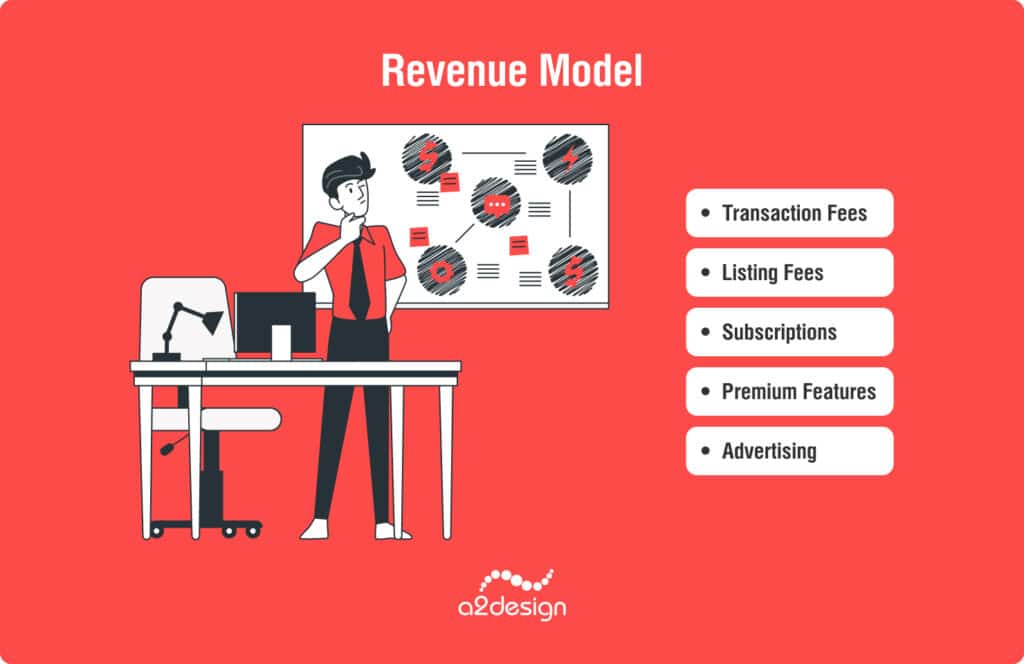
- Transaction Fees: The classic method – charge a small percentage of each successful sale. This scales naturally as your platform grows.
- Listing Fees: Sellers pay a fee to list each item. Be mindful of balance here, as high fees can deter sellers, especially early on.
- Subscriptions: Offer tiered plans with premium features for dedicated sellers (e.g., more listings, analytics, promotion).
- Premium Features: Allow individual add-ons like bumped listings, storefronts, etc., letting users customize their experience.
- Advertising: Cautious with this one, as too much can disrupt the user experience. Consider native-style ads, or sponsored placements that align with your niche.
Transparency: The Cornerstone of Trust
No matter your chosen method, clearly communicate your pricing from day one. Hidden fees or complex structures erode trust. Make it easy for users to understand how much they’ll pay and what they’ll receive in return.
The Balancing Act
The perfect revenue model fuels growth without alienating your core audience. Be especially mindful of excessive fees during the early stages. Think strategically:
- Start with Incentives: Consider waiving fees initially to attract users.
- Tiered Pricing: Offer a basic service with options for sellers to upgrade for more features.
- Community Input: As your marketplace matures, engage users for feedback on pricing to maintain a sense of fairness.
Remember, your revenue model isn’t set in stone. Be prepared to analyze data, user behavior, and adapt as your C2C marketplace evolves.
5. Building Trust: The Backbone of a C2C MarketplaceIn a world where C2C platforms sometimes get a bad rap due to scams or subpar experiences, your commitment to trust will set you apart. Focus on these three pillars:
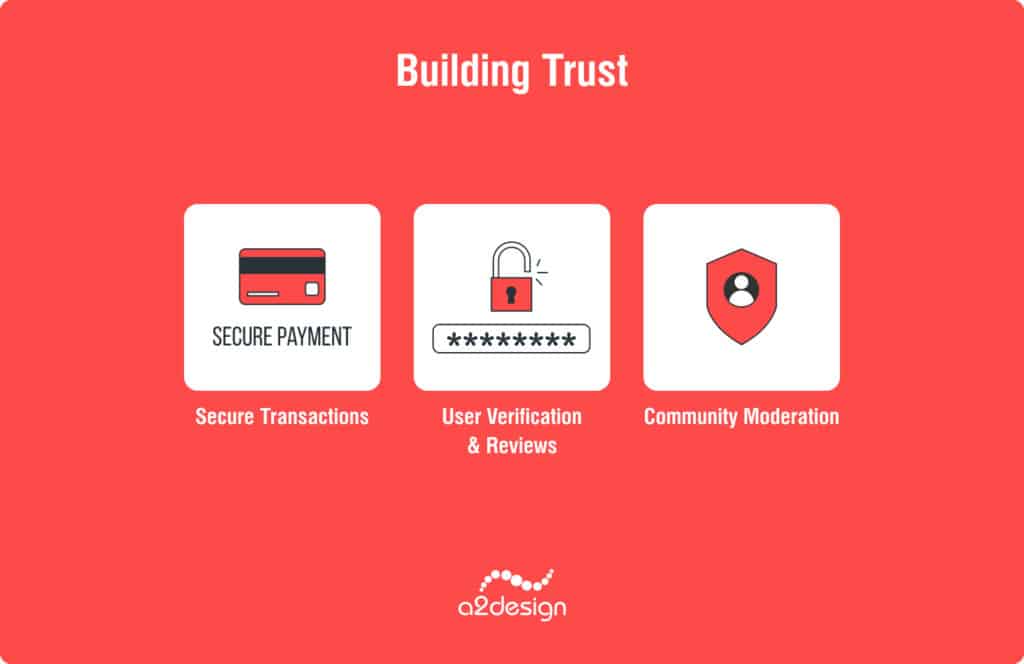
- Secure Transactions
- Payment Gateways: Partner with reputable providers like Stripe, PayPal, or others relevant to your region. These companies specialize in fraud detection and payment security.
- Buyer Protection: Outline a clear policy for refunds, returns, or mediation in case of problems with a purchased item.
- Dispute Resolution: Establish a transparent process where users can raise issues, provide evidence, and receive fair resolution.
- User Verification & Reviews
- Know Your Users: Consider tiered verification. Start simple (email), then add optional steps (phone, ID check) for high-value transactions or users seeking elevated “trusted seller” status.
- Reviews are Gold: Implement a robust system for both product and user reviews. Display positive feedback prominently and use moderation to address inappropriate reviews.
- Community Moderation
- Set Clear Guidelines: These outline prohibited items, behavior, and communication standards. Make them easily accessible to all users.
- Moderation Tools: Invest in tools that flag inappropriate content, allow for user reporting, and streamline moderator review. A mix of automation and human touch is often best.
An effective tactic is to display trust signals throughout your platform. Highlight secure payment icons, buyer protection policies, and positive user testimonials to continually reinforce confidence.
Remember, trust is an ongoing process. Consistently enforcing standards, resolving issues promptly, and being transparent builds a marketplace where people feel safe to do business – the key to long-term C2C success.
6. Technology Stack Choices: Finding the Right ToolsChoosing your technology stack is like selecting the building materials for your marketplace. The right foundation determines flexibility, scalability, and ultimately, user experience. You’ve got two main routes:
- Build from Scratch (Custom Development):
- Pros: Ultimate customization, fine-grained control over every feature and the user journey.
- Cons: Significant time investment, higher development costs, solely responsible for maintenance and updates.
- Marketplace Platforms (Sharetribe, Arcadier, etc.):
- Pros: Core marketplace functionality out-of-the-box, faster launch time, often lower initial costs.
- Cons: Limited customization, potential for vendor lock-in, might need to work within the platform’s design constraints.
The Flexibility vs. Speed Trade-off: Custom builds offer maximum control, ideal for unique concepts or if you anticipate needing highly specialized features. Platforms win for speed-to-market and if your core needs align with their offerings.
Key Technical Requirements
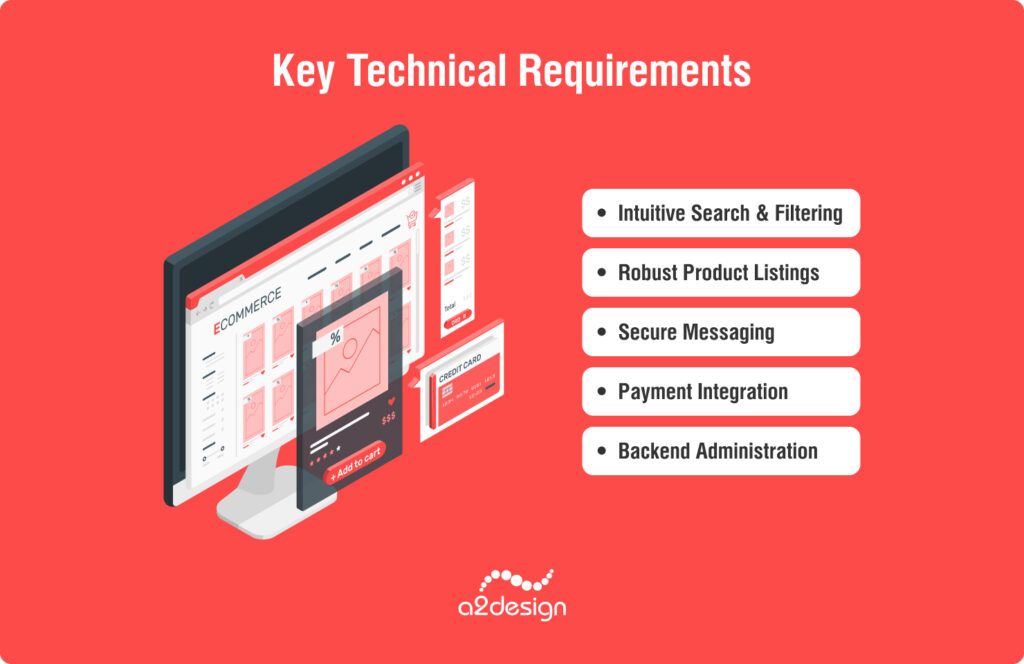
Regardless of your path, your marketplace needs these backbone features:
- Intuitive Search & Filtering: Help buyers find exactly what they need quickly.
- Robust Product Listings: Think clear descriptions, high-quality images, and essential details.
- Secure Messaging: Enable buyer-seller communication for questions and negotiation.
- Payment Integration: Facilitate seamless transactions through trusted payment gateways.
- Backend Administration: Tools for managing users, moderating content, resolving disputes, and analyzing data.
The A2 Design Advantage
This is where a company like A2 Design becomes your ace in the hole. We possess deep expertise in both:
- Custom Marketplace Development: Crafting tailored platforms with a focus on user experience and scalability.
- Integrating Marketplace Solutions: Seamlessly blending pre-built platforms with custom features and design touches to give you the best of both worlds.
Let’s explore your vision and determine the technology path that empowers your C2C marketplace to reach its full potential.
Ready to Build a C2C Marketplace?
Contact UsThink of your marketplace as a well-designed storefront. Great UX is the difference between someone casually strolling in and excitedly coming back for more, versus a potential customer getting frustrated and walking away. Here’s how to get it right:
- Frictionless is King: Every step should feel effortless:
- Easy Registration: Minimize form fields, offer social media sign-up options.
- Intuitive Listing: Clear steps, image guidelines, and pre-filled categories where possible.
- Discovery Made Simple: Powerful search with smart filters, plus curated collections or recommendations to inspire browsing.
- One-Click Checkout: Streamline the payment process; guest checkout can boost conversions.
- Mobile Matters: The chances are high that users will interact with your marketplace on smartphones.
- Responsive Design: Your layout must adapt seamlessly across different screen sizes.
- Touch-Friendly: Make buttons easily tappable, navigation clear, and images optimized.
- App Consideration: For heavily engaged users, a native app can boost retention (if your budget allows).
- The Power of Visuals
- Branding Through Design: Your color scheme, fonts, and overall aesthetic should align with your niche and brand personality.
- High-Quality Images: Emphasize the importance of clear product photos for sellers. These are crucial for enticing clicks.
- Whitespace is Your Friend: Don’t overwhelm users. A clean layout helps information stand out, encouraging interaction.
Don’t just design for users, but try to design with them. Conduct usability testing early in the process, observing how real people navigate your platform. Their insights are invaluable!
8. Marketing and Community Building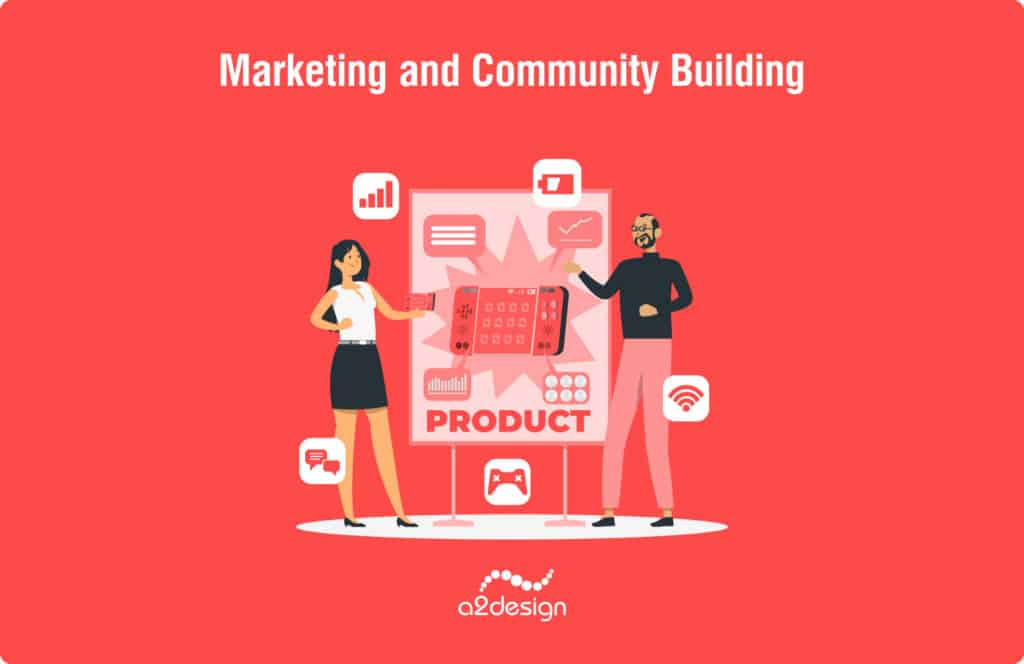
A great platform alone isn’t enough. You need a proactive strategy to let the world know you exist.
Building a successful C2C marketplace goes beyond simply launching a platform. It’s about creating a vibrant ecosystem where buyers and sellers thrive, fostering a sense of community and shared passion for your niche. Here’s how to strategically leverage marketing and community building to cultivate a thriving marketplace:
The Foundation: Reaching Your Target Audience
- Know Your Audience: Where does your target niche spend time online? Tailor your approach to the right social platforms, niche forums, and blogs.
- Content is Your Fuel: Create value-adding content like blog posts, guides, and videos that solve your users’ problems and establish you as an authority.
- Partner Power: Consider collaborations with influencers in your niche or complementary businesses for cross-promotion.
The Magic of User-Generated Content
- Reviews & Testimonials: These are social proof in action. Prompt buyers to review purchases, and showcase positive feedback prominently.
- Reward Sharing: Encourage users to share listings on social media. Offer small incentives for referrals.
- Shine a Spotlight: Feature user-uploaded photos, stories, or creative uses of purchased items. This makes people feel valued.
Community: Your Secret Weapon for User Engagement and Retention
- Facilitate Connections: Enable forums, messaging features, or groups where users connect over shared interests.
- Sense of Belonging: Celebrate milestones, host contests, provide behind-the-scenes glimpses – make it more than just transactions.
- Listen & Respond: Be genuinely engaged with your community. Address concerns, incorporate feedback, and show users their voices matter.
Satisfied and connected users can be your most powerful marketers. This is why it’s important to nurture a sense of community and empower your user users to champion your platform. This is how you fuel organic growth and long-term loyalty.
9. Scaling and Evolving Your MarketplaceLaunching your marketplace is just the first milestone. To achieve ongoing success, you need to plan for growth, leverage data, and cultivate a mindset of adaptability within your ever-evolving C2C environment.
- Built to Scale: As your user base grows, so do the technical demands. Plan accordingly:
- Scalable Architecture: Choose technologies that can gracefully handle increased traffic, user volume, and potential feature additions.
- Robust Payment Systems: Ensure your payment gateway can handle rising transaction volumes without bottlenecks that frustrate users.
- Customer Support: Will you need chatbots, a ticketing system, or a dedicated support team? Proactively scale your support infrastructure to keep up with demand.
- Data: Your Roadmap to Success
- Metrics that Matter: Implement analytics to track key indicators like user growth, active listings, transaction volume, conversion rates, and popular search items.
- Data-Informed Iterations: Don’t make changes based on hunches. Use data to identify bottlenecks, spot new opportunities, and understand the impact of feature enhancements.
- A/B Testing: Before major changes, test different versions with segments of your user base to gather data and make the best decision.
- Embrace the Dynamic C2C Landscape
- Listen & Respond: Continuously gather feedback from users through surveys, reviews, and direct interactions. This might reveal unanticipated needs or friction points in your platform.
- Evolving Policies: Your community guidelines, fee structure, etc., may need periodic revisions to maintain fairness and sustainability. Be transparent and communicate changes clearly.
- New Trends: Stay attuned to broader C2C trends. Can you incorporate elements like live-stream shopping or new payment options that become popular?
An important consideration is to not try to be everything to everyone. As your marketplace grows, it’s tempting to add features for the sake of it. Stay true to your niche focus and make strategic, data-backed decisions about what truly serves your core users.
The A2Design Advantage
We understand the complexities of scaling a C2C marketplace. We can help you:
- Architect for Growth: Choose the right technology stack from the start or optimize an existing one for scalability.
- Data & Analytics Expertise: Set up robust dashboards and provide insights to guide your platform’s evolution.
- Adaptable Development: We create modular systems and implement features in a way that allows for easy refinement as your needs change.
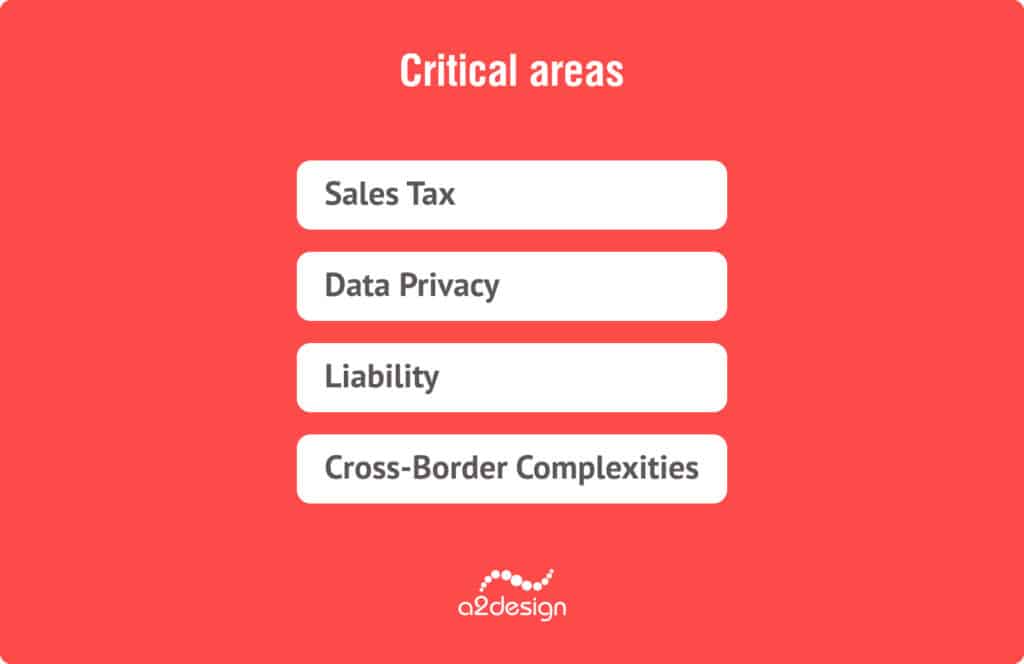
Think of legal compliance as building a sturdy foundation under your marketplace. Ignoring it can lead to costly missteps, fines, or even forced shutdown in severe cases. Consider these critical areas:
- Sales Tax: Rules can be complex, especially if your marketplace connects users across borders. Do buyers or sellers need to collect and remit sales tax? Does your platform have the responsibility to facilitate this?
- Data Privacy: How you collect, store, and use user data is subject to regulations like GDPR (Europe) or CCPA (California). These have global implications if you have users in those regions.
- Liability: Particularly with user-generated content, who is responsible in cases of counterfeit goods, misleading listings, or disputes between users?
- Cross-Border Complexities: Offering C2C transactions across international borders significantly increases regulatory burdens. This may involve import/export restrictions, additional taxes, and specific product safety standards.
Laws Vary: There’s No One-Size-Fits-All Answer
Regulations depend heavily on your physical location, the locations of your users, and the specific niche of your C2C marketplace. What applies to vintage clothing might differ vastly from a platform focused on electronics.
Seek Expert Counsel: This Isn’t a DIY Area
- Terms of Use & Privacy Policies: These are the cornerstones of protecting your marketplace. Get them drafted with the help of a lawyer specializing in e-commerce.
- Ongoing Consultation: As your platform grows, having an attorney on retainer is wise. They can advise on new features, policy changes, or help navigate disputes.
How A2Design Can Help
While we don’t offer legal services, our experience building marketplaces makes us attuned to potential red flags. We can help raise the right questions for your legal team and integrate features (like robust user agreements) that promote compliance.
A2 Design: Your C2C Marketplace PartnerWe at A2 Design possess a deep understanding of C2C marketplace challenges and best practices. Our expertise spans:
- Strategic Consulting: Helping you define your niche, validate your value proposition, and choose the right technology approach.
- Intuitive Design: Crafting user-centric interfaces that delight both buyers and sellers.
- Scalable Development: Whether custom builds or integrating robust solutions, we prioritize platforms engineered for growth.
Our expertise in marketplace development
MadPaws is an online Sydney-based marketplace for pet sitters and pet owners. It started as an MVP. Then it raised $5 million of investments through Series A funding from investors, including Qantas and Airtasker CEO Tim Fung. In 2021 the startup went on IPO with a valuation of $32 million.
The marketplace offers a wide range of services. It provides the possibility for pet owners to find pet sitters and for pet sitters to find local jobs.
If you’re ready to turn your C2C marketplace vision into reality, let’s connect!
Schedule a consultation or contact us to explore how A2 Design can partner with you on this exciting journey.
Let’s wrap up with a recap of the core principles we’ve explored, and a reminder that forging a successful C2C marketplace is a journey, not a sprint.
Below are the 10 things to know before building a C2C marketplace that we’ve covered in this article.
- Niche is Power: A focused niche lets you stand out, target marketing effectively, and build a loyal community.
- Value Proposition: Articulate what makes your platform the place for your target users. Is it price, curation, community, or a unique feature set?
- Trust is Everything: Implement secure transactions, user verification, robust reviews, and clear guidelines to create a trustworthy marketplace.
- Attract Both Sides: Balance incentives for early buyers and sellers to overcome the chicken-and-egg dilemma.
- Revenue Sustainability: Choose a revenue model (or a mix) that aligns with your niche, provides a path to profitability, and doesn’t drive users away.
- Technology Matters: Build from scratch for maximum customization or leverage marketplace platforms for faster time-to-market.
- UX as a Differentiator: Frictionless processes, intuitive design, and mobile-friendliness are essential for user satisfaction.
- Marketing & Community: Content, social media, and building a community beyond basic transactions are key to attracting users and fostering loyalty.
- Growth Mindset: Plan for scaling, leverage data to improve, and be prepared to adapt in the dynamic C2C landscape.
- Legal Foundations: Tackle sales tax, data privacy, and liability issues in collaboration with legal counsel to ensure a compliant marketplace.
Yet, building a C2C marketplace isn’t just about the launch; it’s a continuous process of refinement, user engagement, and evolution. Having the right partner by your side can be the difference between stumbling blocks and sustained success.

- Define Niche and Target Audience
- Validating Value Proposition
- Attracting Buyers and Sellers
- Deciding on a Revenue Model
- Building Trust
- Technology Stack Choices
- Design for User Experience
- Marketing and Community Building
- Scaling and Evolving
- Legal and Regulatory Considerations
- Our Expertise
- Conclusion
